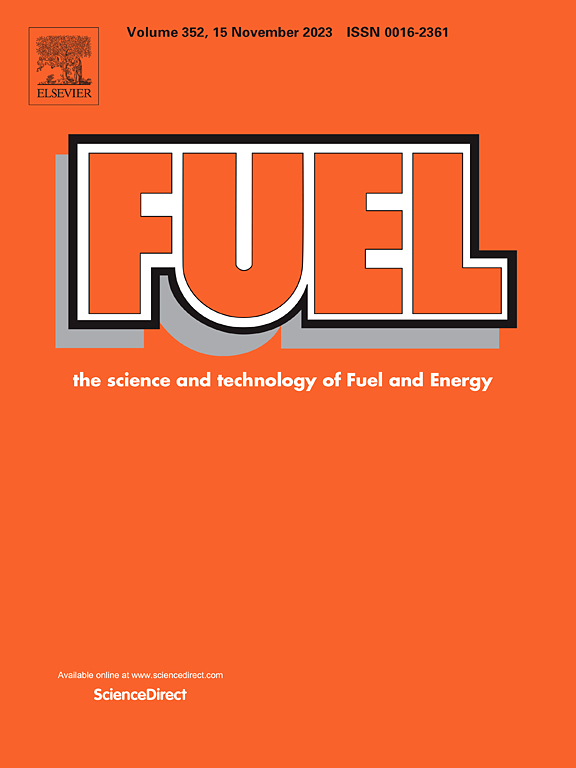Insight into pyrolysis mechanism of p-aminophenol crystal based on thermogravimetric analysis and ReaxFF molecular dynamics
IF 6.7
1区 工程技术
Q2 ENERGY & FUELS
引用次数: 0
Abstract
Antioxidant additives is used for aviation fuel to inhibit oxidative deposition during long-term storage. As a highly reactive additive with difunctional groups, the high-temperature cracking reaction mechanism of p-aminophenol is worthy of clarification. This work studies the pyrolysis kinetics of p-aminophenol based on thermogravimetric analysis and reveals the detail of phase and chemical transfer at the atomic level by heating simulations of ReaxFF MD. Furtherly, following multiple temperature points by isothermal simulation magnifies and observes the crystal cracking reaction mechanism. It reveals the pyrolysis kinetic mechanism that the consumption of p-aminophenol forms a gradually shrinking core with a process from disordered collision to ordered decomposition in endothermic reaction. The high temperature of the phase transition process was triggered by weaken the interaction of structural rings, and increases the collision frequency caused by the of volatile compounds. The dehydrogenation of the difunctional groups NH2 and OH was the most important initial cracking pathway for p-aminophenol. Thereby hydrogen radicals initiate a chain reaction of functional group dissociation. Increasing temperature performs the selectivity for the cracking, which is a key factor in the substitution of amino dehydrogenation by amino dissociation during the cracking process. It also effects the formation pathway of polycyclic aromatic hydrocarbons. In this work, the high-temperature cracking mechanism of antioxidant additives component p-aminophenol is explored through experimental and simulation methods, which provides a theoretical support for the safe aviation fuel.
基于热重分析和ReaxFF分子动力学的对氨基苯酚晶体热解机理研究
抗氧化添加剂用于航空燃料的长期储存,以抑制氧化沉积。对氨基酚作为一种具有双官能团的高活性添加剂,其高温裂解反应机理值得进一步研究。本文基于热重分析研究了对氨基苯酚的热解动力学,通过对ReaxFF MD的加热模拟,揭示了在原子水平上相转移和化学转移的细节,并通过等温模拟对多个温度点进行了放大和观察结晶裂解反应机理。揭示了吸热反应中对氨基酚的消耗形成一个由无序碰撞到有序分解的逐渐收缩核的热解动力学机理。相变过程的高温是由结构环的相互作用减弱引起的,挥发性化合物引起的碰撞频率增加。双官能团NH2和OH的脱氢反应是对氨基酚最重要的初始裂解途径。因此,氢自由基引发官能团解离的链式反应。温度的升高提高了裂化的选择性,这是裂化过程中氨基解离取代氨基脱氢的关键因素。它还影响了多环芳烃的生成途径。本文通过实验和模拟等方法探讨了抗氧化添加剂组分对氨基酚的高温裂解机理,为安全航空燃料的研制提供理论支持。
本文章由计算机程序翻译,如有差异,请以英文原文为准。
求助全文
约1分钟内获得全文
求助全文
来源期刊

Fuel
工程技术-工程:化工
CiteScore
12.80
自引率
20.30%
发文量
3506
审稿时长
64 days
期刊介绍:
The exploration of energy sources remains a critical matter of study. For the past nine decades, fuel has consistently held the forefront in primary research efforts within the field of energy science. This area of investigation encompasses a wide range of subjects, with a particular emphasis on emerging concerns like environmental factors and pollution.
 求助内容:
求助内容: 应助结果提醒方式:
应助结果提醒方式:


